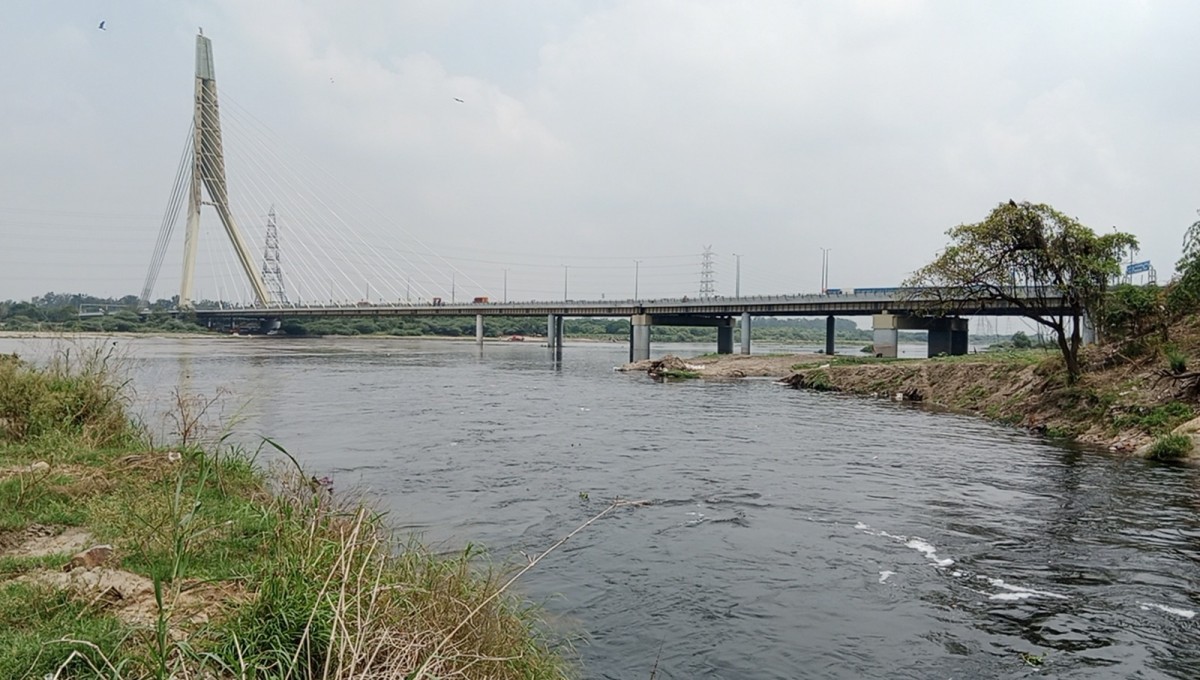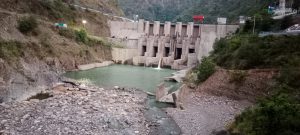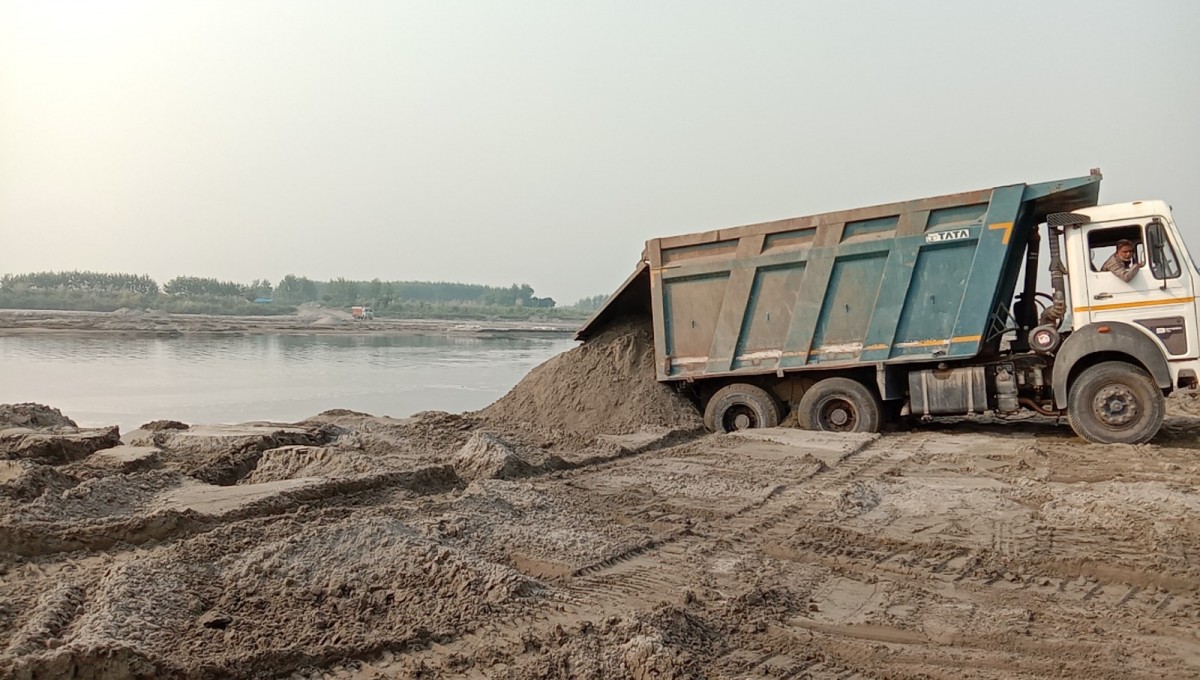No Votes for the Yamuna: Delhi’s Citizens Appeal to Political Parties to Let the River Flow
Mumbai: In the lead up to the day of voting on May 25 in Delhi, a group of concerned citizens, river activists and civil society groups have appealed to the incumbent Delhi government and other national political parties to address the dying state of river Yamuna in the national capital.
On behalf of the Yamuna, the citizens have sent the appeal over emails to the Bharatiya Janata Party (BJP), Congress and Aam Aadmi Party (AAP), and tagged the letter to their social media accounts. They have received no replies except one from the office of Gopal Rai, minister for Environment, Forest & Wildlife, Development and General Administration in the Delhi government, stating Rai will look into the matter after June 4.
The concerned citizens' plea to the political parties is to urgently consider the long standing issue of non-existent environment flows, which have caused the Yamuna to run dry even before it flows into the national capital region. “It was important to bring this matter to the attention of the political parties that the focus should be on increasing the flow in the Yamuna to improve the health of the river,” says Bhim Singh Rawat of the South Asia Network on Dams, Rivers and People (SANDRP), who drafted the letter.
The citizens demand an honest declaration from the central government as well as the state government in Haryana, Uttar Pradesh and Delhi to revive and rejuvenate the Yamuna. “This is an appeal that should have political awakening and traction,” says Shashi Shekhar, former secretary, Ministry of Water Resources, River Development and Ganga Rejuvenation. “This letter is basically to convince the political masters that time has come for long term sustainable measures and not short-term gains.”

Najafgarh drain in Yamuna, Delhi. Photo: Bhim Singh Rawat/SANDRP
The letter lists the main causes over the last few decades for the current state of the Yamuna in Delhi. The construction of nine hydroelectric projects like the Vyasi in Dehradun, dams and barrages in Dakpathar, Asan, Hathnikund, Wazirabad, among others, to meet the demands of electricity, irrigation, industries and potable water have led to unsustainable extraction and diversion of Yamuna waters. The 1376 kilometres long Yamuna is now free-flowing only in her first 100 kms, up to the Vyasi dam.

Yamuna river deprived of environment flows downstream of 120 Mw. Vyasi HEP Dam in Dehradun. Photo: Bhim Singh Rawat/SANDRP
Besides the ecological implications, the basic hydrological function of steady freshwater flow is defunct. Without adequate environmental flow, the effluents discharged by industries and towns alike can’t be taken out of the river. “If it is not flowing then it is not a river,” says Rawat. “Till the time we don’t make it a flowing river, any efforts we put in to clean it up won’t give us the desired results.” Hence, the citizens' core demand of restoring the environmental flow of the Yamuna in Delhi.
Large scale mechanised sand mining projects of the Haryana and Delhi governments between Sonipat and Delhi have crippled the river. Sand absorbs the water to slowly release it in the non-monsoon season, contributing to maintaining the flow in the river. “This function hasn’t been considered by the authorities,” says Rawat. “Because of this, the flow is almost close to zero.” This has reduced the Yamuna from a perennial river to a monsoon fed one.

Mechanised mining along the Yamuna in Karnal. Photo: Bhim Singh Rawat/SANDRP
Groundwater extraction to feed increased agriculture is another reason for the river to run dry. Degradation of tree cover in Yamuna’s catchment and upper reaches has dried up the tributaries that used to feed the Yamuna. Thus, almost the entire river basin, along with its aquifers, till Delhi doesn’t get recharged. Once the aquifers are full, the river will flow again.
The letter recommends corrective measures to restore the flow in the Yamuna again. There is no more infrastructural development on Yamuna. The dams, barrages and hydel power projects — of which six are under construction and 31 more proposed — on the Yamuna and her tributaries should be scrapped. The activists say the river can take no more developmental pressure. The Yamuna is peculiarly fragile as her founding basin in the Himalaya is only 2.8% of over 3.6 lakh sq.km basin area that it supports.
With no flowing water between Hathnikund in Haryana to Delhi, agriculture has taken over the floodplains. This needs to be cleared as in her spate, the river recharges the floodplain, the groundwater and other aquifers — for as far as 50 kms from the main river. “This is required to be restored and is possible when the river isn’t diverted,” according to Shekhar. “Right now we are sucking the river dry.”
Also read: Namami Gange: Ten Years On, The Ganga Still Runs Dirty, Its Water Undrinkable
In recent years cropping patterns, especially in Haryana, have changed to paddy and sugarcane cultivation. This has led to more extraction of river water as these are water-intensive crops. Shekhar suggests the government must ensure this agricultural practice changes to other crops that don’t need a lot of water. “This area doesn’t see rain that is suitable for paddy cultivation,” he says. “Cultivation should move to crops that can give higher returns than paddy - but can grow with drip or sprinkler irrigation.”
Abstraction of river water can be reduced if sewage water is treated as the river flows into Delhi. This should be made mandatory for non-potable purposes. Delhi has sewage treatment plants but their efficiency is too low for the amount of sewage generated. Other major towns along the Yamuna also need to treat their water. “Treating sewer water for irrigation would be far cheaper than constructing a dam,” says Shekhar.
These aren’t new ideas or recommendations. They were put forth more than a decade ago by the late Manoj Misra, Convener of Yamuna Jiye Abhiyan. His ‘Maily Se Nirmal Yamuna’ Revitalisation Plan was ratified by the National Green Tribunal in 2017 as the blueprint for the government to follow in order to rejuvenate Yamuna. They continue to violate court orders and damage the river.
If that continues, we are heading towards water starvation, according to Rajeev Suri, a Delhi-based environmentalist. He implores the government to consider the larger picture of the use of limited natural resources in unabated growth of the national capital region. He thinks the government is creating harakiri and gives Delhi another five years before the city is brought down to its knees by water stress. “We were a water rich country, now we are a water scarce country and will become a water starved country,” he warns. “As you can see the political mood is just not focused on that at all.”
This article went live on May twenty-fourth, two thousand twenty four, at zero minutes past four in the afternoon.The Wire is now on WhatsApp. Follow our channel for sharp analysis and opinions on the latest developments.




